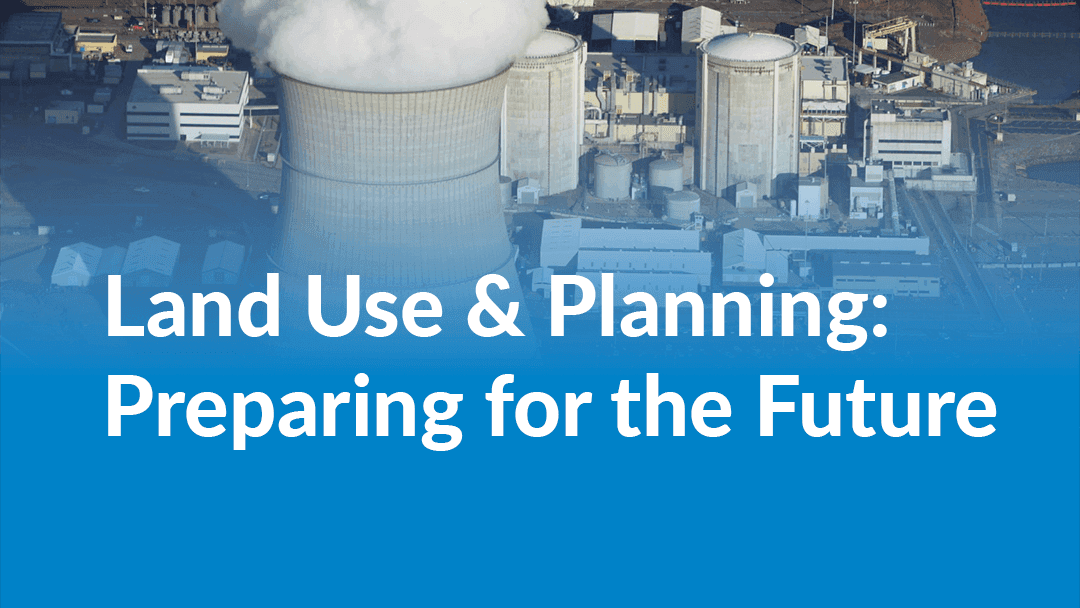
News
By Smart Growth America, September 15, 2023
 Zoning represents the foundation of development in many communities that host nuclear power plants. When planning for economic resilience and diversification, it can be very useful to evaluate your local zoning codes to determine where it is legally viable to construct new housing, businesses, and industry. This process is especially important for nuclear host communities as they plan to diversify their economies or consider an eventual future without an operational power plant.
Zoning represents the foundation of development in many communities that host nuclear power plants. When planning for economic resilience and diversification, it can be very useful to evaluate your local zoning codes to determine where it is legally viable to construct new housing, businesses, and industry. This process is especially important for nuclear host communities as they plan to diversify their economies or consider an eventual future without an operational power plant.
Who can use this whitepaper?
- Local elected officials
- Municipal planners
- Economic development professionals
- Zoning Board representatives
Before deciding on residential or commercial development in your community, an analysis of existing zoning regulations should be conducted to determine what is permitted or required according to local law. Often, zoning codes are outdated and may not have been comprehensively reviewed in several decades. This can be a major barrier to relevant, modern development plans. Additionally, comprehensive plans for the community often rely on these outdated codes to achieve the community’s objectives.
To put it simply, without up-to-date and effective zoning regulations, communities cannot successfully realize their economic development and other goals as outlined in their comprehensive plans.
Walking through the process
Step 1: Gather parcel information, either in a spreadsheet or in a shapefile, with existing zoning codes listed, to summarize the total number of parcels within your community. Then calculate how many parcels of each zoning type there are. For example:
- X number of commercial parcels
- Y number of residential parcels
- Z number of industrial parcels
Step 2: Divide the number of each zoned parcel by the total number of parcels in your community to calculate the percentage of parcels each zone covers. This will provide the opportunity to see how much of a community’s zoning is under which type of land use regulation and allow the development process to be more streamlined. Several questions should be answered, including:
- Is this zoning mix appropriate for our community?
- Is the current zoning meeting the needs of our residents?
- What steps can be taken to adjust zoning?
- What areas are appropriate for rezoning and/or redevelopment? This could be completed by determining where high- and low-value clusters of properties and/or land are located in your community. See more information at the end of this document.
Step 3: From this information, create a table outlining information similar to the following example:
This zoning analysis will provide a breakdown and detailed description of current zoning regulations and policies allowing members of the community to visualize what types of opportunities are legally available for future development. A zoning analysis is often followed by or paired with a build-out analysis, which establishes how many additional housing units and/or additional commercial space can be built under current regulations. This information can alert the local government of possible new tax revenue or higher demands on city services.
This resource is part of the Community Economic Diversification Roadmap, a new tool created by Smart Growth America and the Nuclear Communities TA team, to support communities in planning for the challenges and opportunities that stem from hosting energy infrastructure.
Related News

© 2025 Smart Growth America. All rights reserved
Site By3Lane Marketing

















